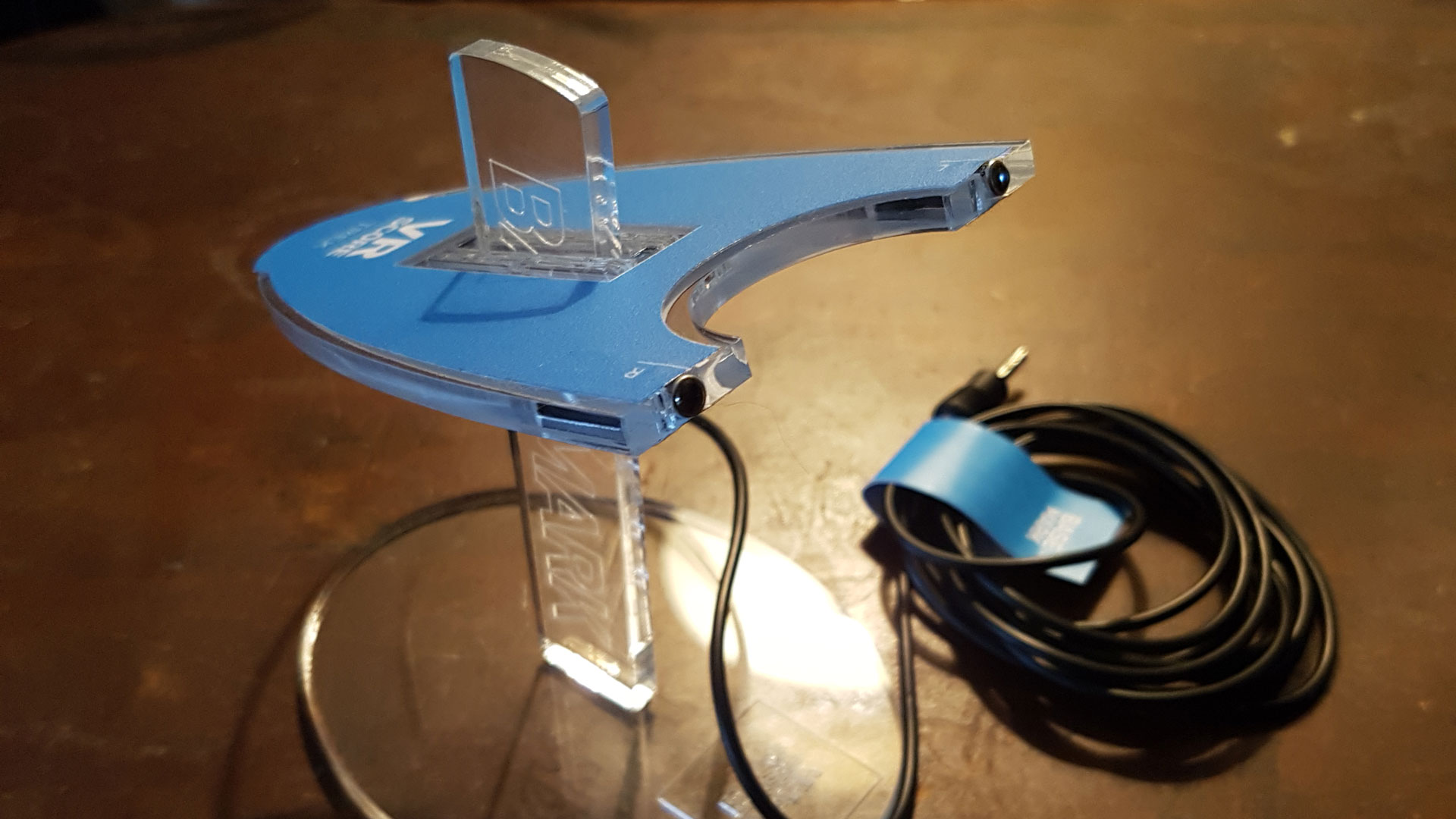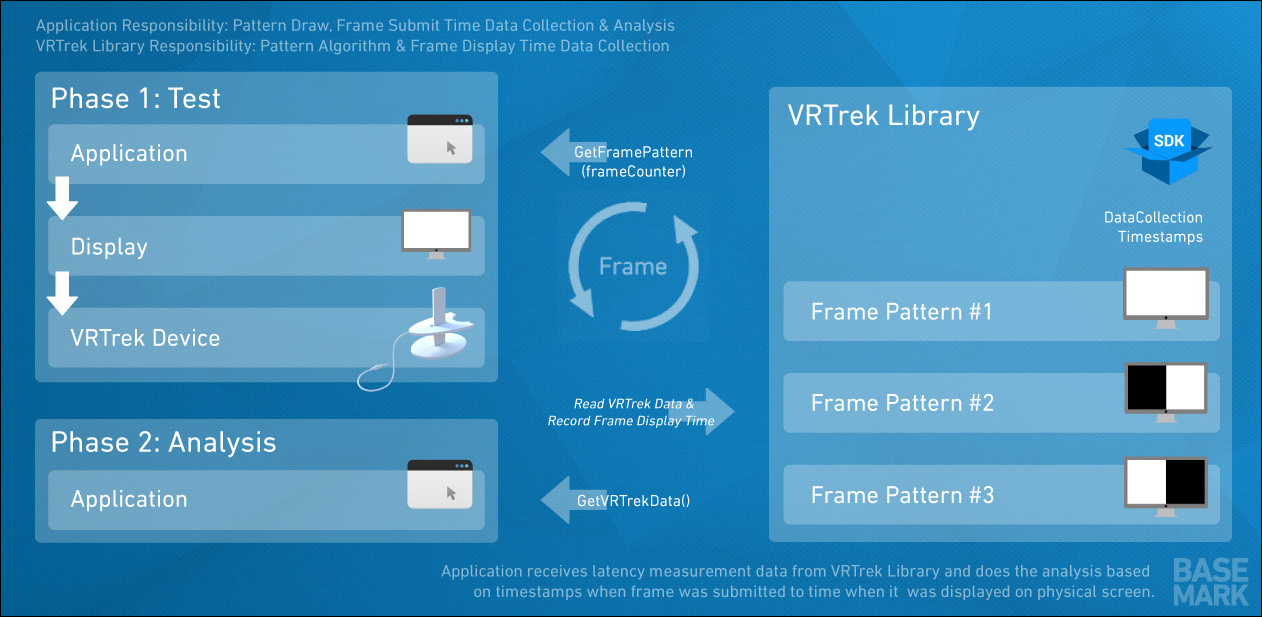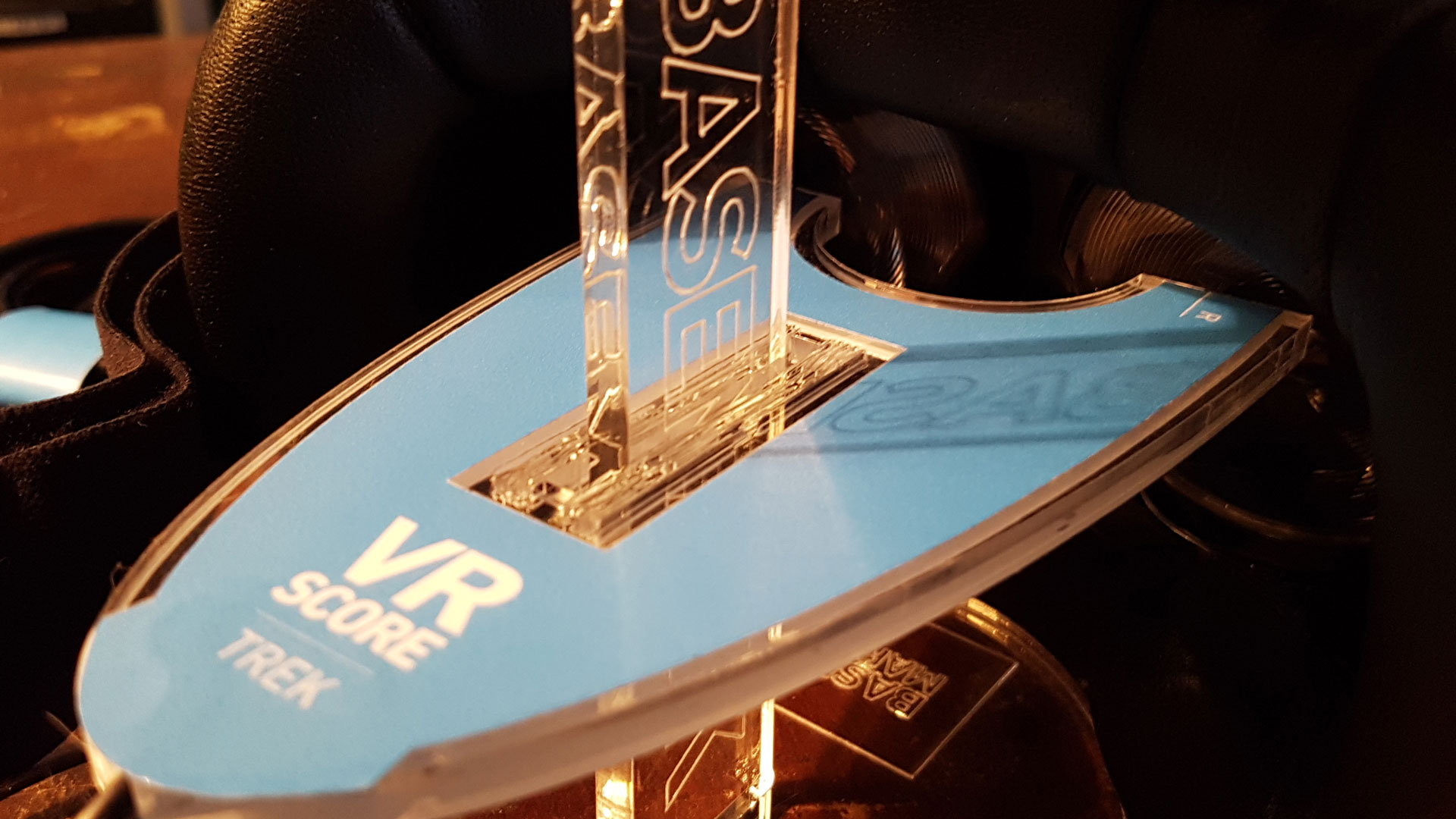Basemark Releases VRTrek Latency Tool, Library For VR HMD Vendors And Software Developers
Basemark is finally putting its VRTrek latency tool to work. After months of delays getting the VRScore VR benchmark tool out to the public, Basemark released a software development kit called VRTrek Library for developers and hardware vendors.
Basemark first revealed the VRTrek latency testing hardware in March alongside its announcement about the VRScore benchmark. At the time, Basemark intended to release VRScore in June, but things don’t always go as planned. The company is still working towards bringing the benchmark suite to the public, but it’s ready to get the tools into the hands of creators to help them improve the user experience of their software and hardware.
Basemark’s VRTrek latency testing tool features two photodiodes that detect light from the HMDs display. The two sensors are spread out such that each one monitors a separate lens. The VRTrek hardware sends a signal to the computer via a PC audio jack. Basemark said it tested the tool with RealTek integrated audio cards. Your mileage may vary with other audio devices.
VRTrek Library provides developers and hardware vendors with the tools necessary to measure the time it takes for an image to reach the display following a draw call (in milliseconds). VRTrek can also measure dropped frames, duplicate frames, and screen persistence. VRTrek Library includes Basemark’s patent pending latency measurement device, VRTrek, which measures the left and right latency simultaneously. It also includes a software development kit (SDK) to allow developers to “easily integrate [VRTrek] into their testing frameworks.”
Basemark’s VRTrek Library latency measurement solution is available now to qualified vendors. To purchase a copy, contact sales@basemark.com
Get Tom's Hardware's best news and in-depth reviews, straight to your inbox.
Kevin Carbotte is a contributing writer for Tom's Hardware who primarily covers VR and AR hardware. He has been writing for us for more than four years.
-
wifiburger did VR suddenly become so mainstream and popular that developers actually need this garbage latency tuning test ?Reply
you know I"m just saying, cause developers still haven't mastered regular controls or proper 3d field of view on non-vr games ! -
kcarbotte Reply19048100 said:did VR suddenly become so mainstream and popular that developers actually need this garbage latency tuning test ?
you know I"m just saying, cause developers still haven't mastered regular controls or proper 3d field of view on non-vr games !
Latency is far more important that mastering "regular controls."
New locomotion methods are regularly invented for VR. Developers are not working towards bringing classic control schemes to VR as much as they are working towards discovering a better way.
Proper 3D FoV in non-VR games??
What are talking about? Games that aren't developed for VR don't compensate for VR. end of story. nothing else to it.
You can't seriously expect developers to go back and convert 3D environments of older games to work in VR.
VR games work in VR. Non-VR games aren't meant for VR. There's nothing to master.
Latency drastically effects the comfort of properly designed VR games. With high latency, images don't draw fast enough to create convincing VR experiences, which causes people's brains to react in various ways. Latency isn't a "mainstream" VR problem. It's one of the top priority problems.


